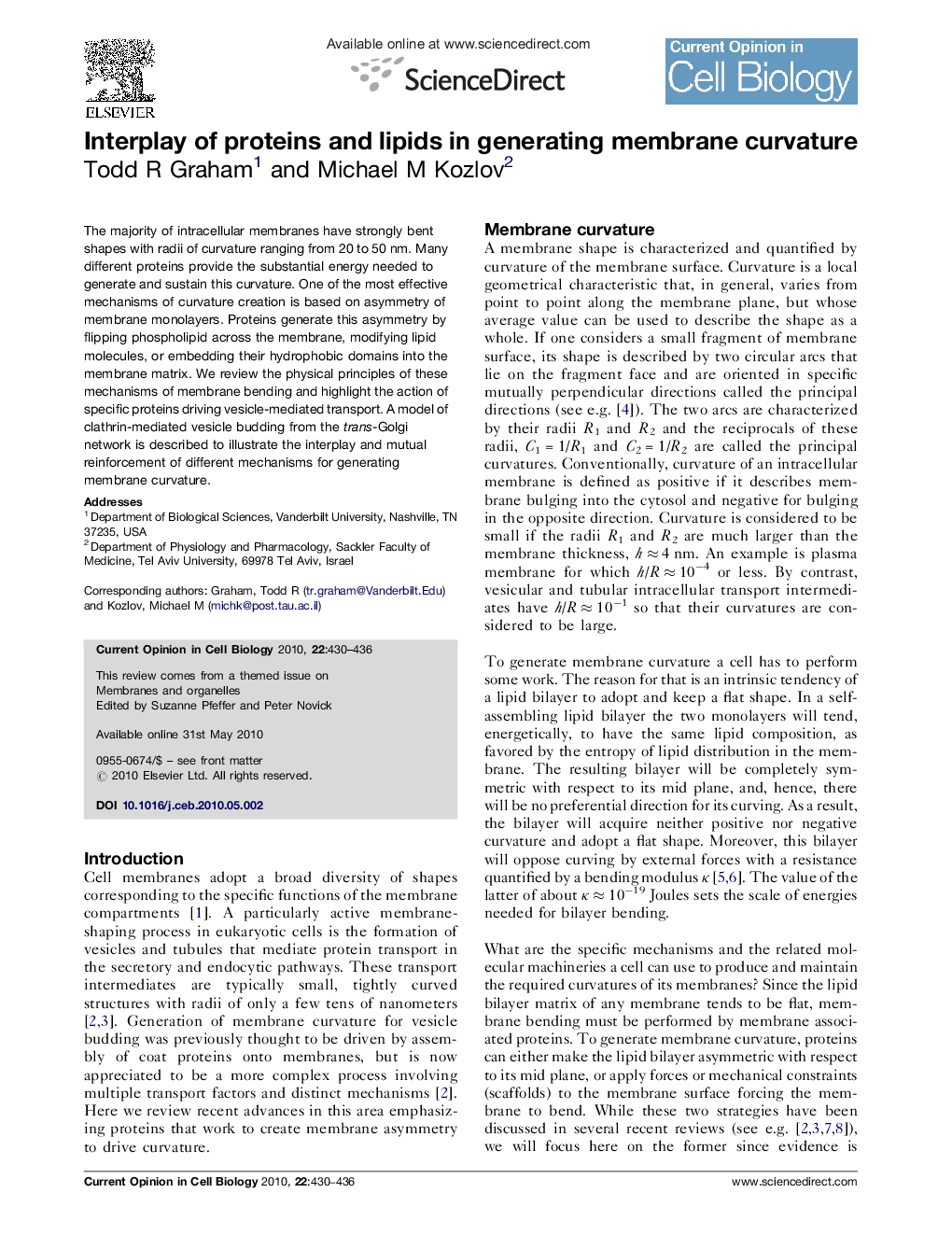| Article ID | Journal | Published Year | Pages | File Type |
|---|---|---|---|---|
| 2170006 | Current Opinion in Cell Biology | 2010 | 7 Pages |
The majority of intracellular membranes have strongly bent shapes with radii of curvature ranging from 20 to 50 nm. Many different proteins provide the substantial energy needed to generate and sustain this curvature. One of the most effective mechanisms of curvature creation is based on asymmetry of membrane monolayers. Proteins generate this asymmetry by flipping phospholipid across the membrane, modifying lipid molecules, or embedding their hydrophobic domains into the membrane matrix. We review the physical principles of these mechanisms of membrane bending and highlight the action of specific proteins driving vesicle-mediated transport. A model of clathrin-mediated vesicle budding from the trans-Golgi network is described to illustrate the interplay and mutual reinforcement of different mechanisms for generating membrane curvature.
